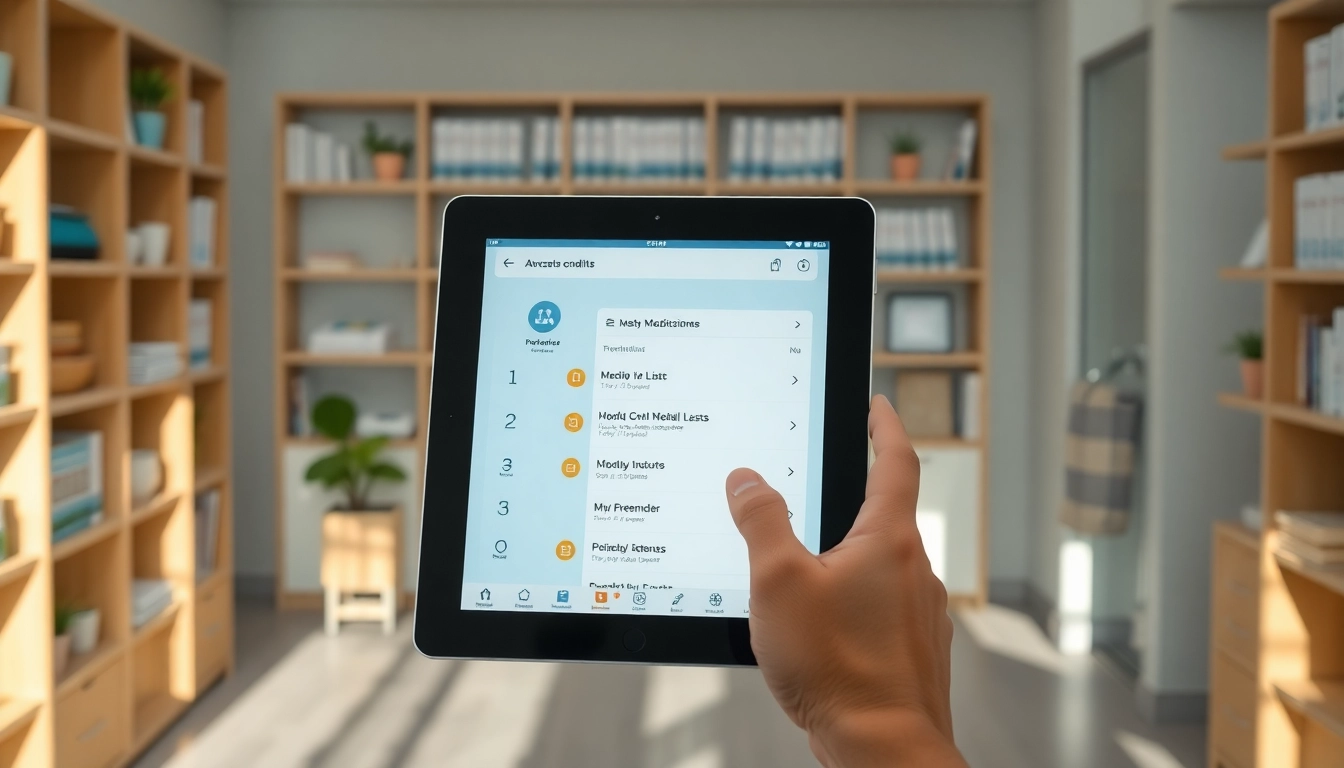Understanding E-Prescribing Software
What is E-Prescribing Software?
E-prescribing software is a digital solution that enables healthcare providers to create, send, and manage prescriptions electronically. This process not only streamlines the prescription lifecycle but also enhances patient safety and improves medication adherence. With electronic prescriptions, physicians can easily send prescriptions directly to pharmacies, reducing the risk of errors associated with handwritten prescriptions. This software is an integral part of many Electronic Health Records (EHR) systems, promoting more efficient patient management and better communication between healthcare providers and pharmacies.
Key Features to Look For
When evaluating e-prescribing software, it’s crucial to consider several key features that contribute to its usability and effectiveness:
- User-Friendly Interface: The software should have an intuitive layout that allows quick access to necessary tools and information.
- Integration Capabilities: It should seamlessly integrate with existing EHR systems and other healthcare management tools.
- Medication Database: A comprehensive database that includes information on drug interactions, allergies, and patient histories reinforces safer prescribing.
- Mobile Access: Many providers benefit from mobile access to the software, enabling them to manage prescriptions on-the-go.
- Reporting Tools: Robust reporting features facilitate tracking prescription patterns, patient adherence, and overall management of healthcare practices.
Benefits for Healthcare Providers
The adoption of e-prescribing software offers multiple benefits for healthcare providers:
- Efficiency: Reducing the time spent on paperwork, e-prescribing allows healthcare providers to focus more on patient care.
- Improved Patient Safety: By minimizing errors associated with handwriting or verbal communication, e-prescribing enhances safety for patients.
- Increased Patient Participation: With features like refill requests, patients can be more active in their healthcare journey.
- Cost-Effectiveness: Over time, electronic prescriptions can lead to lower healthcare costs by preventing medication errors and unnecessary hospitalizations.
Evaluating E-Prescribing Software Reviews
Importance of User Reviews
User reviews are a vital resource for healthcare providers considering e-prescribing software solutions. They provide real-world insights into usability, effectiveness, and support. Reviews can uncover benefits not initially visible in promotional materials, such as customer service quality or integration challenges. As you explore eprescribing software reviews, pay attention to common themes noted by multiple users to determine the software’s strengths and weaknesses.
How to Analyze Review Quality
Not all reviews carry the same weight. Here are some effective strategies to analyze the quality of reviews:
- Check for Detailed Experiences: Reviews that provide context and specific examples tend to be more reliable.
- Look for Consistency: Pay attention to recurring praises or complaints among different users; credibility increases with frequency.
- Examine the Reviewer: Consider the background and experience of the reviewer. A provider with extensive e-prescribing experience may offer perspectives that are particularly insightful.
Comparing Different Software Based on Reviews
When comparing different e-prescribing software solutions based on reviews, create a matrix to outline key features, pricing, user ratings, and overall satisfaction. This approach makes it easier to visualize differences and similarities, helping pinpoint which software aligns best with your practice needs. Use this comparison to identify which systems are addressing common pain points and delivering the functionalities your providers value most.
Common Challenges with E-Prescribing Software
Technical Barriers and User Adoption
While e-prescribing software brings significant advantages, it does come with challenges. Resistance to change is a common hurdle. Healthcare providers may be accustomed to traditional prescription methods and may require training to become proficient with new technologies. Institutions must invest in user education and actively solicit feedback to address doubts and improve the adoption process.
Integration with Existing Systems
Integration difficulties can limit the effectiveness of e-prescribing software. If the software does not integrate well with existing systems, it can lead to data silos, impacting workflow efficiency. This issues can be mitigated through careful selection processes and vendor discussions that emphasize the need for responsiveness in technology integration.
Understanding Compliance and Regulatory Issues
Compliance with state and federal regulations is non-negotiable in healthcare environments. E-prescribing software must adhere to specific standards to protect patient data and ensure legal prescribing practices. Professionals overseeing e-prescribing implementations must stay informed on evolving laws and regulations to avoid penalties and maintain secure practices.
Best Practices for Choosing E-Prescribing Software
Assessing Your Practice Needs
Before selecting e-prescribing software, perform a detailed assessment of your practice’s needs. Consider factors such as the volume of prescriptions, types of patients, provider specialties, and integration with other systems. Understanding these needs allows you to match them accurately with software features, fostering better outcomes and user satisfaction.
Trialing Software Options Before Commitment
Taking advantage of trial offers is one of the best strategies when choosing e-prescribing software. Trials allow providers to experience the software’s functionality firsthand and gauge how well it meets their user requirements. Collect input from all potential users during this phase to ensure input reflects a comprehensive view from different practice roles.
Consulting Peer Recommendations
Peer recommendations can provide invaluable insights into e-prescribing software effectiveness. Engage with other healthcare professionals in your network to discuss their experiences. On platforms dedicated to healthcare discussions, solicit opinions on which software has worked well in similar settings and gather information on potential pitfalls to avoid.
Future Trends in E-Prescribing Software
Emerging Technologies Influencing E-Prescribing
As technology evolves, so too does e-prescribing software. Emerging technologies such as artificial intelligence and machine learning are beginning to influence how prescriptions are processed, analyzed, and optimized. Features like predictive analytics may enable providers to better understand patient behaviors and prescribing patterns, leading to even more personalized care approaches.
Predicted Developments in User Experience
There is a growing emphasis on improving user experience in software design. Future iterations of e-prescribing systems will likely focus on simplifying interfaces and enhancing mobile access. Innovations may also include incorporating patient feedback directly into the design process, ensuring the software evolves to meet the actual needs of its users.
Impact on Healthcare Delivery Models
The integration of advanced e-prescribing software is expected to transform healthcare delivery models significantly. As more healthcare providers adopt electronic prescriptions, we may see shifts toward value-based care, where improved medication management and adherence lead to better patient outcomes and lower costs. This transformation could enhance the overall efficiency of care delivery, foster patient trust, and ultimately reshape healthcare systems worldwide.




